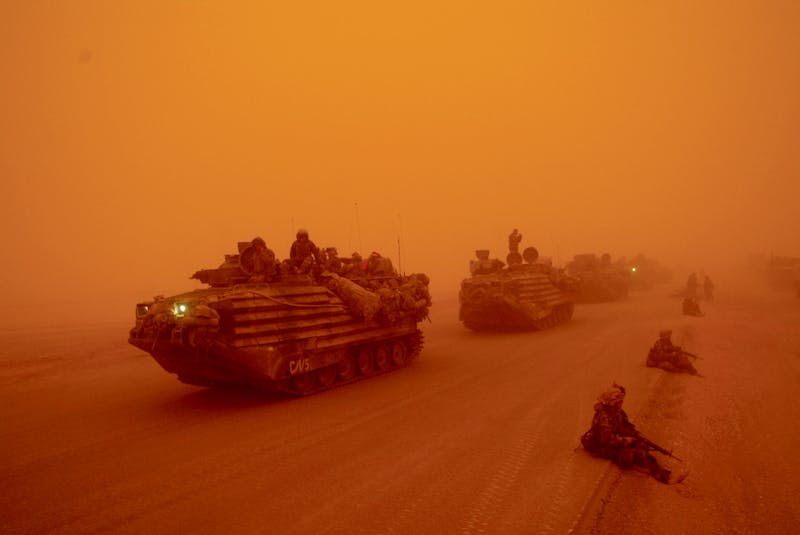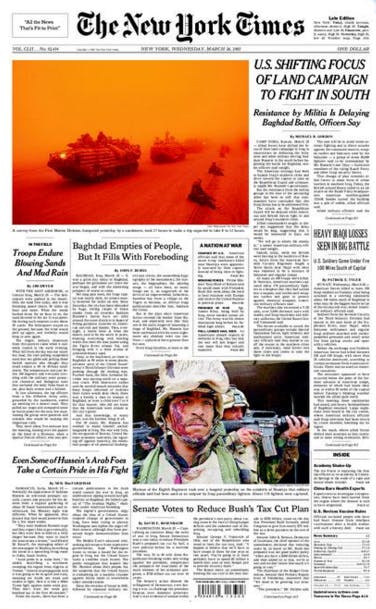Writers have been grumbling about the ideological perils of war photography nearly as long as photographers have ventured into conflict zones, but in the years since Susan Sontag’s 1977 treatise On Photography, which took leery scrutiny of photography to new heights, it’s become something of a pastime for critics. The result has been what the writer Susie Linfield has described as “a tsunami of too-easy scorn.”

It’s not hard to understand the inclination. Photographs of pain are particularly fraught territory and they therefore deserve extra study, particularly when the lines between photojournalism and art blur. But too often, the critique amounts to the same hand wringing about beauty’s proximity to destruction. Sebastião Salgado, perhaps the world’s most famous photojournalist, is accused of “sentimental voyeurism” by Le Monde’s François Chevrier for his grand, sympathetic images of the suffering and misery of migrants. In the New York Times, Sarah Boxer finds Time photographer James Nachtwey’s photographs of violence so “gorgeously produced” as to be “almost grotesque.” And Metropolis M’s Christophe Van Eecke, writing about war photographer turned artist Luc Delahaye’s still and painterly war photographs, protests, “If it is morality that Delahaye is concerned with, there is no intrinsic need to produce either beautiful or panoramic photographs. Form and content wrench, but not in a productive way.”
That timeless—and in my view, tired—complaint is, alas, parroted in David Shields’ book, War is Beautiful, which Powerhouse Books published this month. Shields, the author of more than a dozen books of fiction and nonfiction, however, does not target any one photographer, but rather, the entire editorial aesthetic of the New York Times. Reviewing thousands of front page war photos between the 2001 invasion of Afghanistan and the present day, Shields writes, he found “an unrelenting parade of beautiful images whose function is to sanctify the accompanying descriptions of battle, death, destruction, and displacement.” The Times’ selections “glamorized war and the sacrifices made in the service of war,” and he found himself at once attracted to and repelled by them.

In his book, Shields reproduces some of those photos, organized under the banner of 10 “visual tropes or gestures”—like “Painting,” “God,” and “Playground”— to make the case for their sins. These include ignoring “hysterical grief,” erasing “the body’s grotesque disfigurement and death,” and making war look like a movie or a video game fought by “action heroes.” The “aestheticized and anesthetized” photos, David Hickey argues in the book’s afterword, are akin to pornography—they’re nothing like the good ol’ images of WWII, when the “snapshot aesthetic” illustrated the “cruddy violence” of war through “the blur, the swipe and the flying dirt,” Hickey writes. “Everything is composed in this book and composure is a decidedly un-warlike attribute.”
Is it? Hickey’s not the first to say so. The Danish critic and artist Peder Jansson, for one, once lamented, “I find it hard to understand how anyone can think either about composition or style when they are in the middle of a war situation, among physically and mentally dying and murdered people.” But photographers can and do, even when their aesthetic favors the chaotic over the calm. A messy war photo is not inherently an honest one; like even the most tranquil shot, it is another deliberate, crafted interpretation of reality. To claim otherwise is to ignore photography’s inherent limitations.
Even if one buys the argument about the hazards of beauty, it’s hard to see how the Times is an flagrant offender. Unlike Salgado and Nachtwey’s highly specific, undeniably artful aesthetics, the front-page photos that run in the Times are, by comparison, fairly standard fare—the sort of everyday, professional photojournalism that largely transmits information. In fact, many of the photos in the book were taken by photographers from Reuters, Getty, and the Associated Press and have therefore likely made the covers of many other newspapers around the world. If Shields has an argument with the Times’s front-page photographs, therefore, he’s really making an argument against contemporary war photography in general.

In Shields’s view, however, the choice to run these particular images says something specific and nefarious about the Times—he sees it as what he describes as the paper’s long-held tradition of appeasing government. It began, he wrote, with Jewish publisher Adolph Ochs’s deliberate underreporting of the Holocaust in order to avoid appearing biased or contradicting the Roosevelt administration’s slowness to act on the crisis in Europe. Since then, Shields writes, the Times and the U.S. government “use each other to instantiate their own authenticity.” The paper “knows precisely what truth the power wants told and then prints the truth as the first draft of history,” he says.
This is a hard position to defend, even though in recent history the Times made some missteps; eleven years ago, in 2004, the paper’s editorial board issued a mea culpa for “problematic articles” during the lead-up to the Iraq war that relied on the same informants whose shaky accounts were confirmed by government officials eager to start a war. But to suggest that the paper—the one that published the Pentagon Papers, and, more recently, the WikiLeaks trove and Edward Snowden’s privacy revelations—has some sort of deep-seated and special pro-government agenda just doesn’t hold up. Moreover, arguing that it has any more interest in maintaining a “normative position” than any other major, non-dissident private media organization sounds like conspiracy theorizing.
Photographs are subjective, but presented as they are in Shields’ book—with their captions buried in the back of the book—readers are forced to first evaluate them according to Shields’s own, rigid interpretation. Were the photographs presented in a less constrictive way, however, the reader certainly might find alternative meanings in the imagery. A photo in the “Pietà” section, for instance, which is meant to demonstrate how “mourning is always muted and respectful,” shows exactly the opposite: A Palestinian man holding the bloody body of a boy killed by Israeli rockets wails, his eyes clenched in agony, as mayhem swirls around him. A photo in the “Nature” section, meanwhile, of an Army officer walking through a poppy field in Afghanistan, seems like an ironic, if mostly harmless, take on the contrast between life and death. Shields, however, wants the photo to serve as example of how the Times makes military action out to be “a habitat, the preserve of masculine desire for war.”
In truth, war may not be beautiful, but not every moment in a war zone is horrifying either. While many of the photos that Shields picks often point to that uncomfortable reality as a sign of deliberate distortion, what he’s really found is the everyday weirdness of war. Sometimes, when they’re not killing or being killed, soldiers shoot hoops or play cards or laugh with buddies; that doesn’t mean war is fun and games. Sometimes, a soldier will protect an innocent civilian, but that doesn’t mean he won’t accidentally kill someone else. Sometimes the sky is filled with color and war planes alike. The former doesn’t have to sanctify the latter.
What all of that does illustrate is that war is often contradictory. Reporting it in all its complexity is not glorification but a service. To reject that—as Shields, who proclaims on the book’s front cover that he no longer reads the Times, has—is to misunderstand the messy and complicated business of war itself.